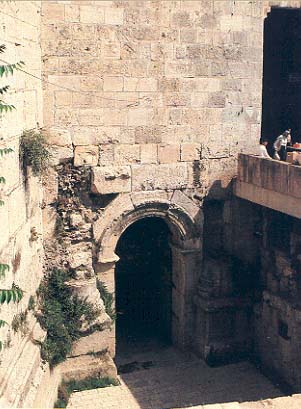Image Details

Zev Radovan
Roman gate beneath the Damascus Gate. Recently cleared, this gate led into second century A.D. Roman Jerusalem, named Aelia Capitolina. The arch, formed by receding concentric rings, closely resembles the Ecce Homo arch, but differs distinctly from the arch of wedge-shaped stones beneath the Golden Gate. From these stylistic comparisons scholars conclude that the buried gateway beneath today’s Golden Gate was built at a different time than these other arches and does not date to Roman Jerusalem.
